In geology and paleontology, ephemeral markings are found and studied throughout the rock record. These markings are also called trace fossils. Primary examples of these markings are ripple marks, raindrop marks, and various tracks or footprints. They are ephemeral because these markings normally would not be expected to last—they are by definition short-lived, transitory, and fleeting.
Most people have seen human and animal footprints and water ripples in beach sand. These markings often look identical to the trace fossil examples but are gone with the next big wave or next high tide. Here follow some photos of these ephemeral markings.
 Barefoot and Shoe Marks in Sand at an Oregon Beach
Barefoot and Shoe Marks in Sand at an Oregon Beach
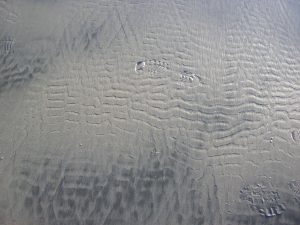 Footprints and Water Ripples in Sand at an Oregon Beach
Footprints and Water Ripples in Sand at an Oregon Beach
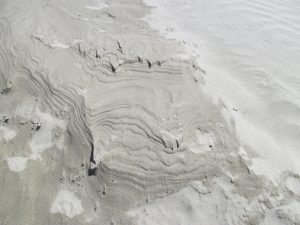 Complex Ripple Marks in Sand at an Oregon Beach
Complex Ripple Marks in Sand at an Oregon Beach
While the above are examples of ephemeral marking that were gone within 24 hours, similar marks can last several days next to lakes, rivers and ponds. Even those markings will be gone relatively quickly due to weather and the work of various life forms. We do not witness these types of imprints in the earth’s surface lasting for long periods of time.
We do often find ripple marks, raindrop imprints, animal footprints, and even human footprints, frozen in the rock record. What do these markings tell us about earth history? I will provide an answer after a look at the following series of some of these ephemeral markings that have been found in the rock layers of America.
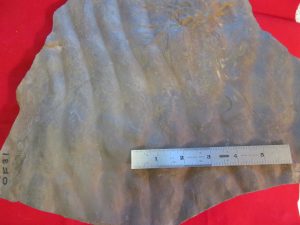 High Relief Fossil Ripple Marks in Sandstone Slab from New Jersey
High Relief Fossil Ripple Marks in Sandstone Slab from New Jersey
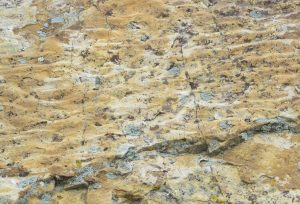 Large Area of Ripple Marks in Sandstone near Denver, Colorado
Large Area of Ripple Marks in Sandstone near Denver, Colorado
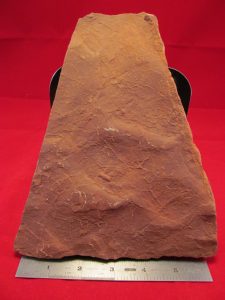 Water Ripple Marks in Mudstone from New Mexico
Water Ripple Marks in Mudstone from New Mexico
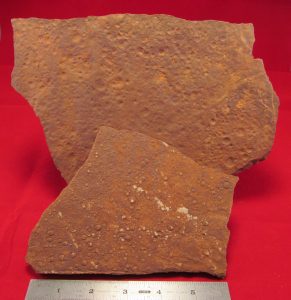 Concave and Convex Raindrop Marks in Mudstone from New Mexico
Concave and Convex Raindrop Marks in Mudstone from New Mexico
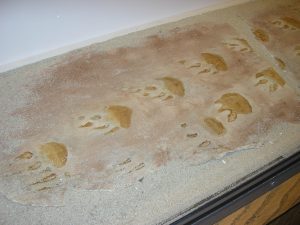 Fossil Reptile Tracks from Utah
Fossil Reptile Tracks from Utah
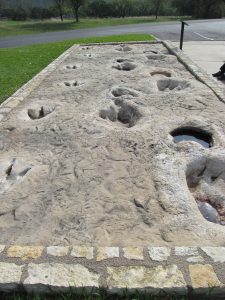 Dinosaur Trackways Preserved near Glen Rose, Texas
Dinosaur Trackways Preserved near Glen Rose, Texas
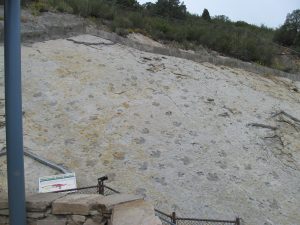 Dinosaur Trackways near Denver, Colorado
Dinosaur Trackways near Denver, Colorado
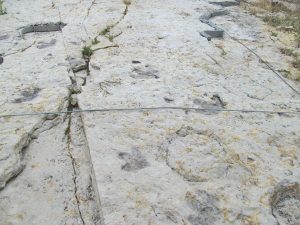 Close up of Dinosaur Trackways near Denver, Colorado
Close up of Dinosaur Trackways near Denver, Colorado
All of these examples of ephemeral markings in rock show that the long-ages interpretation for them is faulty, and the biblical creationist interpretation makes more sense. The various rock layers in which these markings are found could not have been exposed for millions of years as explained by the secular paradigm. The actions of a one-year long worldwide Flood can better explain how these markings were made and preserved for thousands of years until discovered.
In numerous cases after the markings are discovered, they quickly disappear due to weathering if not protected by a building. That was the case for some dinosaur footprints I examined in Utah and that can be seen in the image below. That is also an issue I noticed for dinosaur footprints found along the Paluxy River in Texas. If these markings do not last for even a few decades, depending on the type of rock and the climate etc., why would we ever expect them to last for millions of years of exposure to the elements?
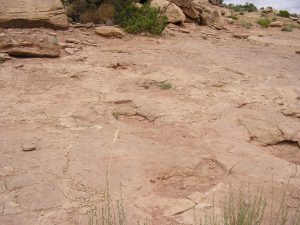 Dinosaur Trackway eroding away in Utah
Dinosaur Trackway eroding away in Utah
J.D. Mitchell
For more on fossils get my book:



